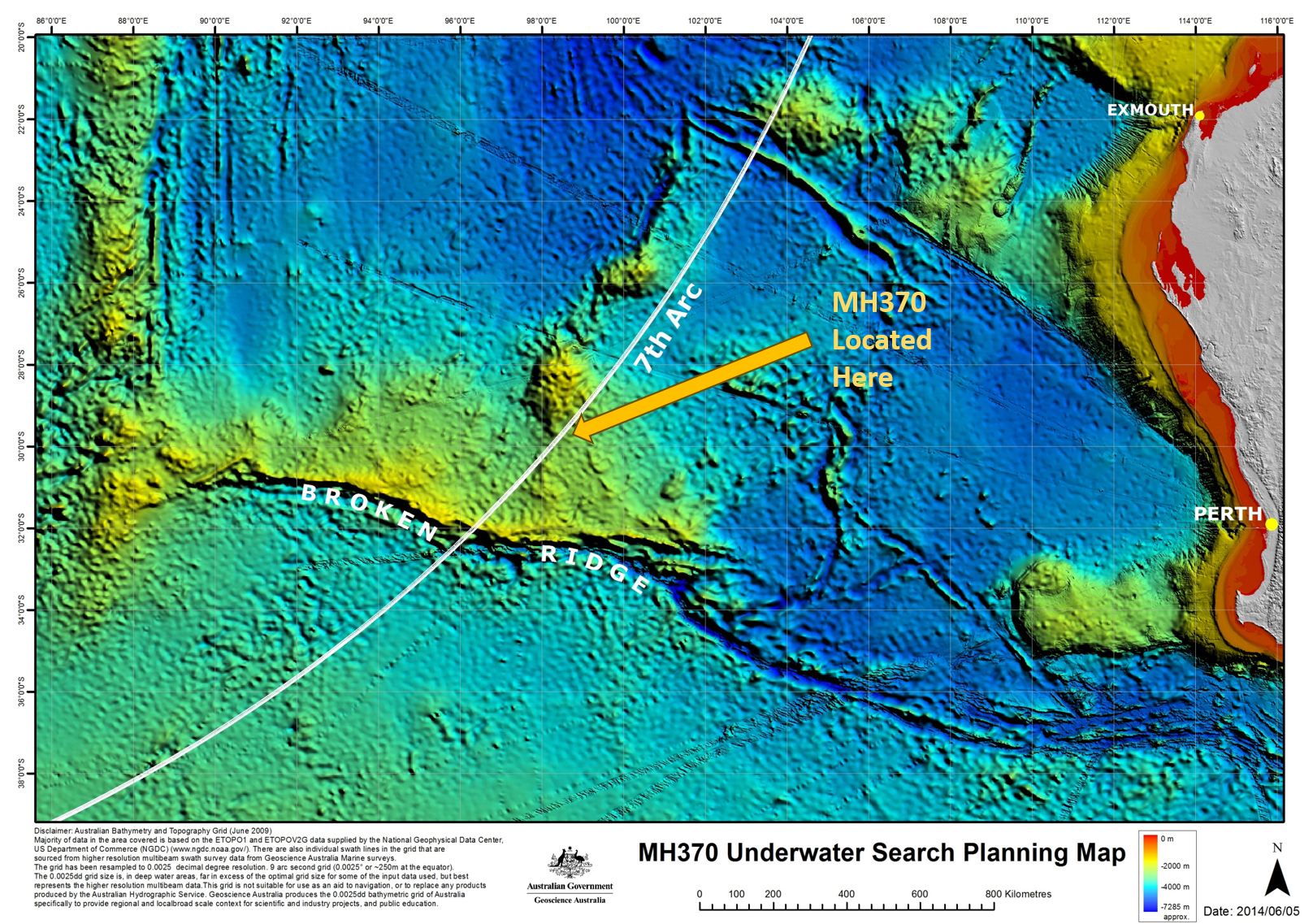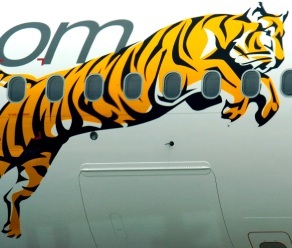Deeper Understanding Into Final Moments Of MH370
15 April, 2024
6 min read
By joining our newsletter, you agree to our Privacy Policy


British Aerospace engineer and MH370 expert Richard Godfrey has published fascinating details of the last minutes of the flight of MH370 which reinforces his WSPRnet technology which has pinpointed a final resting place for the Boeing 777.
The analysis on his website is compelling reading and reveals once again Mr Godfrey's deep understanding of everything Boeing 777 and how the various factors give us a clear picture of the final resting place of Mh370.
Mr Godfrey using WSPR tracking to follow MH 370 has identified an area between 39.9 nmi and 40.9 nmi from the 7th Arc at 00:19:29 UTC on March 8, 2024. That area is 1560km west of Perth, Western Australia as under;

Mr Godfrey's post starts thus:
"There has been discussion again recently about the missing Inmarsat satellite data from the In-Flight Entertainment (IFE) setup message, which was not received as expected at around 00:21:06 UTC, around 90 seconds following the Satellite Data Unit (SDU) reboot, which started at 00:19:29.416 UTC and was acknowledged at 00:19:37.443 UTC. The SDU reboot is thought to have occurred due to the Auxiliary Power Unit (APU) coming online following dual engine flameout and fuel exhaustion to the engines and just prior to fuel exhaustion to the APU.
"The APU fuel feed is lower in the fuel tank and allows 30 lbs of fuel to the APU after fuel exhaustion to the main engines, assuming the aircraft is in a normal flight attitude. The APU when electrically loaded runs for a maximum of 13 minutes 45 seconds on 30 lbs of fuel.
"When both engines flame out, the APU autostart sequence begins and takes around 60 seconds for power to come online. We know that the SDU reboot started at 00:19:29.416 UTC and from the manufacturer’s tests the SDU required approximately 60 seconds to transmit a log-on request after the power application. This means the APU came online at around 00:18:30 UTC and the autostart sequence commenced around 00:17:30 UTC and the APU fuel would last at a maximum until 00:32:15 UTC.
"The failure to receive the IFE signal is falsely used by some MH370 analysts as proof that the crash occurred before 00:21:06 UTC and therefore the crash was close to the 7th Arc.
"As Capt. Patrick Blelly points out, it is perfectly possible that one or both engines were shut down at the end of flight to preserve fuel for the APU in order to provide essential hydraulic and electrical power to the aircraft. Capt. Patrick Blelly further points out that this would enable the flaps to be extended for a controlled ditching. Capt. Patrick Blelly and Jean-Luc Marchand show that an active pilot can perform a glide with 30° flaps extended and this could result in a controlled ditching between 00:28:20 UTC and 00:35:30 UTC. The crash point in this case is between 45.4 nmi and 66.8 nmi from the 7th Arc at 00:19:29 UTC.
"However, the hypothesis that the flaps were extended is in contradiction to the ATSB findings, where they point out that the damage to the Outboard Flap recovered from Pemba Island, Tanzania that they subsequently analysed shows that it was not extended at impact.
Suggested Read: The 10 most asked questions on the Mh370 search
"The Ram Air Turbine (RAT) can also be deployed manually from the cockpit overhead panel or automatically when hydraulic or electrical power is lost from the main engines and the APU. The RAT does not provide hydraulics to be able to extend the flaps however, the pilot would require APU power for flap extension......"
To read the rest of the report click this link.
In summary, Mr Godfrey says:
The WSPR crash location aligns with the:
1. Boeing fuel endurance and fuel range.
2. Inmarsat satellite data.
3. Boeing end-of-flight simulations.
4. ATSB found that the flaps were not extended.
5. Damage to 43 items of MH370 floating debris recovered around the Indian Ocean that show the crash was a high energy impact.
6. UWA drift analysis predicted a crash area between 28.297°S and 33.172°S long on the 7th Arc.
JOIN: AirlineRatings.com YouTube Channel
GET: Accurate MH370 Information From AirlineRatings.com Newsletter
Airlineratings.com is packed with information about air travel and answers questions that many of us may have thought of, but didn’t know who to ask. Well, now you do!
Airlineratings.com was developed to provide everyone in the world with a one-stop shop for everything related to airlines, formed by a team of aviation editors, who have forensically researched nearly every airline in the world.
Our rating system is rated from one to seven stars on safety – with seven being the highest ranking. Within each airline, you will find the country of origin, airline code, booking URL and seat map information. The rating system takes into account a number of different factors related to audits from aviation’s governing bodies, lead associations as well as the airline’s own safety data. Every airline has a safety rating breakdown so you can see exactly how they rate.
Over 230 of the airlines on the site that carry 99 per cent of the world’s passengers have a product rating. Given that low-cost, regional and full-service carriers are so different we have constructed a different rating system for each which can be found within each airline.
Airlineratings.com has information on over 30 types of aircraft from the latest Boeing 787 to the A380 and smaller jets.
Best of all, there are simple answers to many of the quirky questions including:
- “What are all those noises after takeoff and before landing?”
- “Why do you have to put the window shades up for landing and takeoff?”
- “What is a winglet and what is it for?
- “Why is it so costly to fly short distances?”
- “How often is an aircraft maintained?
- “How strong is a wing?”
- “How do they test aircraft”
- “How often do plane tires need to be replaced?”
Next Article
Virgin gets nod for Tiger deal

Get the latest news and updates straight to your inbox
No spam, no hassle, no fuss, just airline news direct to you.
By joining our newsletter, you agree to our Privacy Policy
Find us on social media
Comments
No comments yet, be the first to write one.

